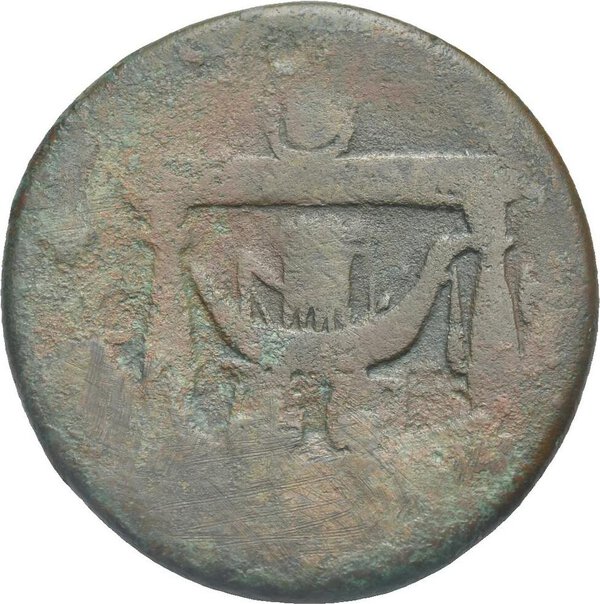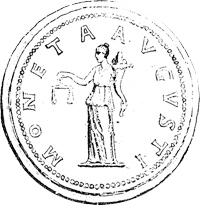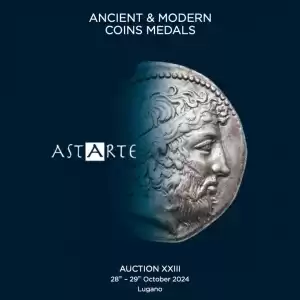

Egypt. Alexandria. Trajan, 98-117. Drachm (Bronze, 33.26 mm, 21.76 g). Dated RY 19 (= 115/6). [ΑΥΤ ΤΡΑΙΑΝ Ϲ]ΕΒ ΓΕΡΜ [ΔΑΚΙΚ] Laureate head to right, aegis over far shoulder. Rev. Distyle Greco-Egyptian temple enclosing a cart with a barge, upon which rests a square shrine, surmounted by hawks, enclosing uncertain objects; [L]-IΘ (date) across fields. RPC III, 4951 note (RY 20) var. (wreathed with corn ears) and 4632 (RY 15). cf. Dattari-Savio 1159 (date recorded by Dattari as [L]-IΘ but unclear) and 7278. Emmett 426. Fine. Extremely Rare.
Ex Giovanni Dattari Collection 1159. Ex Naville Numismatics Ltd. 47, 03.03.2019, lot 274.
For the discussion of the potential dating of this issue, cf. RPC III 4632 note.
G.M. Staffieri and M. Tosi, ‘La barca sacra di Osiri nella monetazione alessandrina’, in (eds.). D. Gerin and others, Aegyptiaca Serta in Soheir Bakhoum Memoriam (Edizioni Ennerre, Milan, 2008), pp. 229-35.
The following article outlines how the design recurs in years 19 and 20, but see below. The design recurs on rare coins of Marcus Aurelius, year 16 (see RPC IV online, citing NY 1944.100.611341 and Münzhandlung Basel 6 (1936) lot 970; see also D3357-8, A Dem 2084). The object in the shrine on the coins of Trajan does not look like a mummy of Osiris (as on the coins of Aurelius), and is perhaps a representation of its external decoration (see e.g. the barge depicted by Staffieri and Tosi on their p. 235). A specimen was also described by D for year 19 (D1159: ‘[L I]Θ’), but the date is not clear on the rubbing in DS (and the obv. illegible), and it is probably safer to regard it as probably another coin of year 15. O815 is the same design, of year 20 (or possibly 19?).


